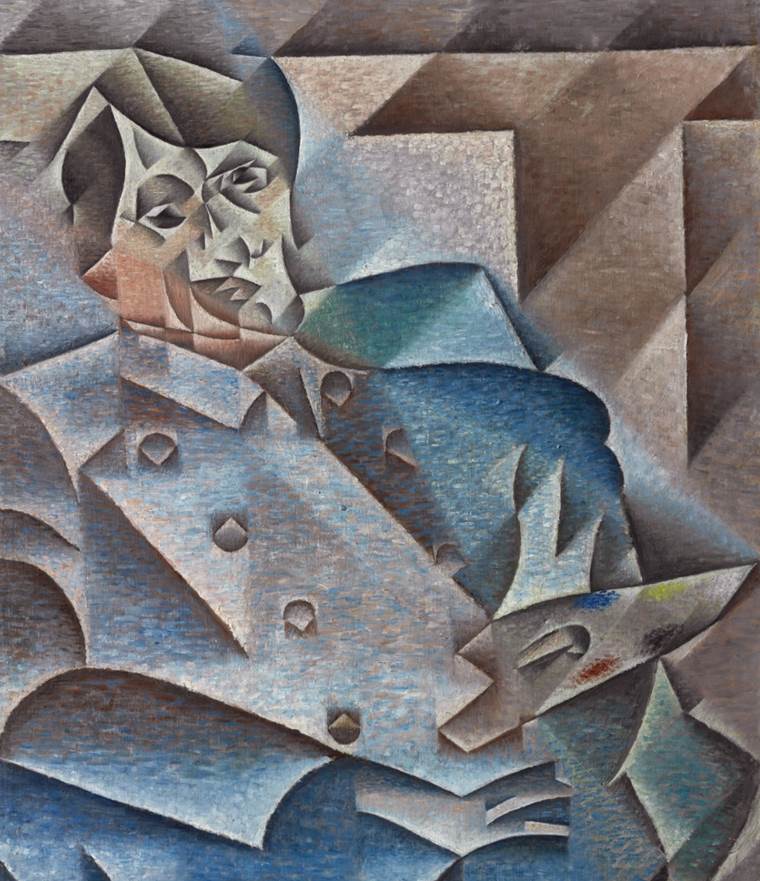Cubism is a modern art movement that emerged in the early 20th century and which transformed the world of art indefinitely.
The movement emerged from the paintings of Paul Cézanne, a Post-Impressionist artist who incorporated small brushstrokes that make up larger fields into his paintings.
This led the most famous Cubist artists to take it a step further and break up elements to recreate them in abstract forms.
Although Cubism initially started in paintings, it spread to other forms of art as well. This included sculpture, music, literature, and architecture.
The influence of Cubism on modern art can not be underestimated. A wide range of movements emerged in reaction to it, including Futurism, Suprematism, Dada, Constructivism, Vorticism, De Stijl, and Art Deco.
In this article, you’ll discover some of the most famous Cubist paintings so you can understand what this remarkable art movement was all about.
1. Les Demoiselles d’Avignon – Pablo Picasso
- Date created: 1907
- Dimensions: 243.9 × 233.7 centimeters (96 × 92 inches)
- Location: MoMA, New York City, United States
Les Demoiselles d’Avignon is one of the most famous paintings by Pablo Picasso and is considered to be one of the most important and most valuable artworks of the 20th century. It depicts 5 prostitutes on the Carrer d’Avinyó, a street in Barcelona where Picasso (1881-1973) lived for extended periods.
In the early 20th century, the Spanish artist was merely an emerging young artist who wanted to make a name for himself. The controversy sparked by this painting drew a to of attention to his work and it eventually culminated in the development of the Cubist art movement.
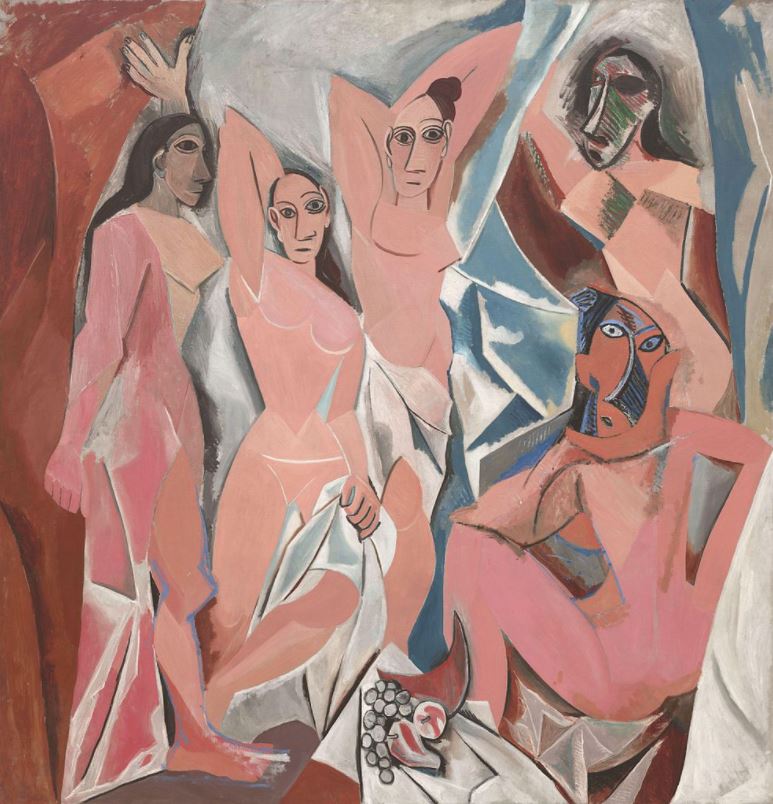
2. Man on a Balcony – Albert Gleizes
- Date created: 1912
- Dimensions: 195.6 × 114.9 centimeters (77 × 45.25 inches)
- Location: Philadelphia Museum of Art, Philadelphia, United States
Man on a Balcony is also known as “Portrait of Dr. Théo Morinaud” and is a painting by Albert Gleizes (1881-1953), a French artist and art theoretician who proclaimed himself to be the founder of the Cubist art movement. That’s mainly because he wrote the manifesto titled “Du Cubisme” in 1912.
This particular work is one of the most fascinating Cubist paintings ever produced because it was exhibited at the Paris Salon in 1912. This caused quite a stir that reached the highest levels of the French government at the time with some members questioning if public funds needed to be spent to support this “Barbaric Art.”
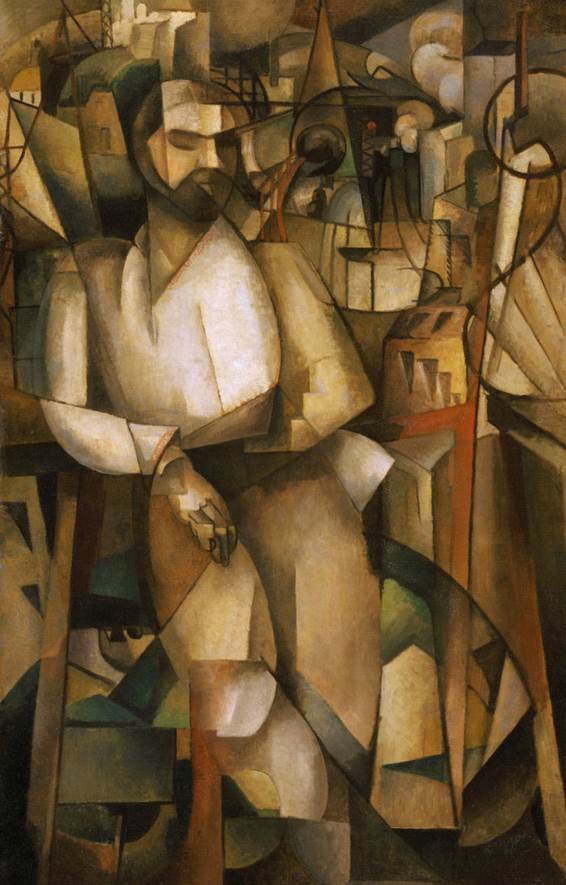
3. Houses at l’Estaque – Georges Braque
- Date created: 1908
- Dimensions: 40.5 × 32.5 centimeters (15.9 × 12.7 inches)
- Location: Lille Métropole Museum of Modern, Contemporary, and Outsider Art, Lille, France
Houses at l’Estaque is a work painted by Georges Braque (1882-1963), one of the leading figures of the Cubist art movement. It’s one of the paintings inspired by Paul Cézanne who painted multiple works depicting l’Estaque, the place in southern France where he lived.
This work is a pivotal painting in several ways. It’s considered to be either an important Proto-Cubist landscape or the first Cubist landscape. An art critic named Louis Vauxcelles mocked the painting, claiming it was composed of “cubes,” a notion that coined the name of the art movement.
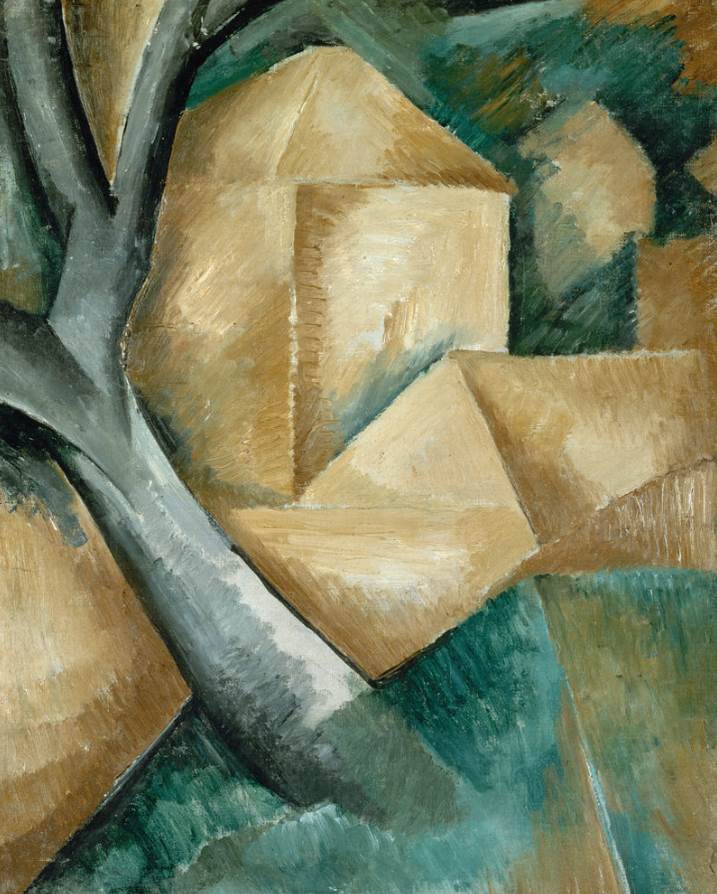
4. Le goûter – Jean Metzinger
- Date created: 1911
- Dimensions: 75.9 × 70.2 centimeters (29.8 × 27.6 inches)
- Location: Philadelphia Museum of Art, Philadelphia, United States
Le Goûter is a painting by Jean Metzinger (1883-1956) that is also known as “Tea Time” or “Woman with a Tea Spoon.” The art critic who led to the coining of the term Cubism jokingly called this painting “la Joconde à la cuiller” or “Mona Lisa with a spoon.”
Another art critic called it “La Joconde Cubiste” or “The Mona Lisa of Cubism.” Because of the reference to Leonardo da Vinci’s masterpiece, it was deemed to be the most important work of Cubism until the movement started gaining worldwide attention.
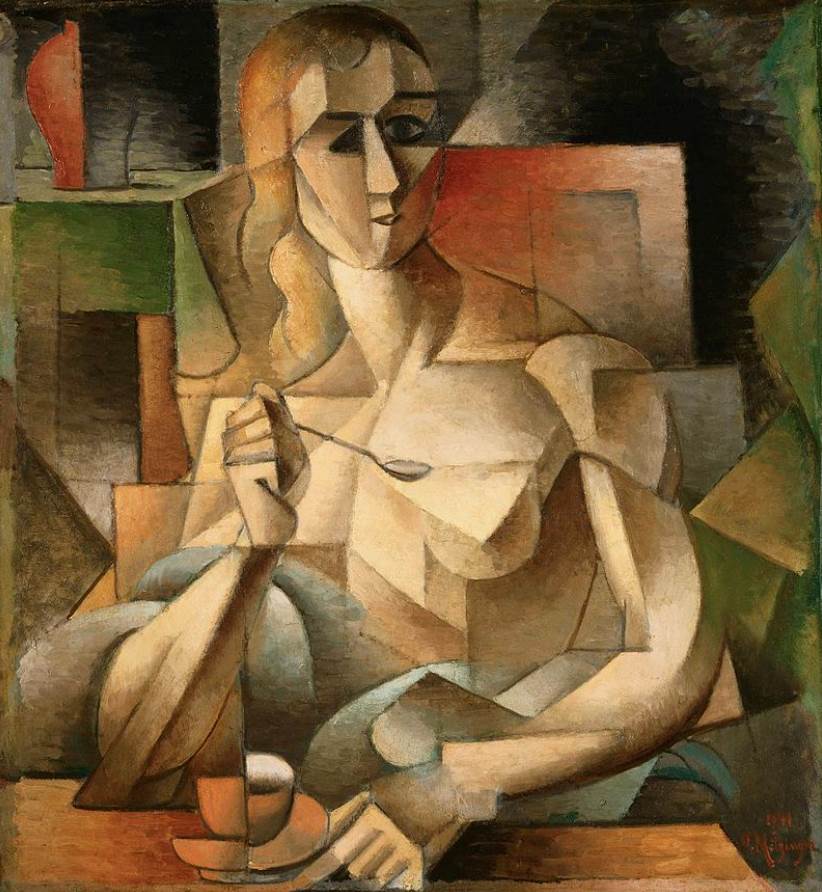
5. Girl with Mandolin – Pablo Picasso
- Date created: 1910
- Dimensions: 100.3 x 73.6 centimeters (39.5 x 29 inches)
- Location: MoMA, New York City, United States
Girl with Mandolin is a defining painting in the oeuvre of Pablo Picasso. The Spanish artist became world-famous because of his experimental artworks that transformed the world of art in the 20th century.
This painting depicts a girl playing the mandolin and is considered to be one of the most important works of his “Analytical Cubist” phase. This was a period after Proto-Cubism had emerged and which defined the art movement indefinitely.
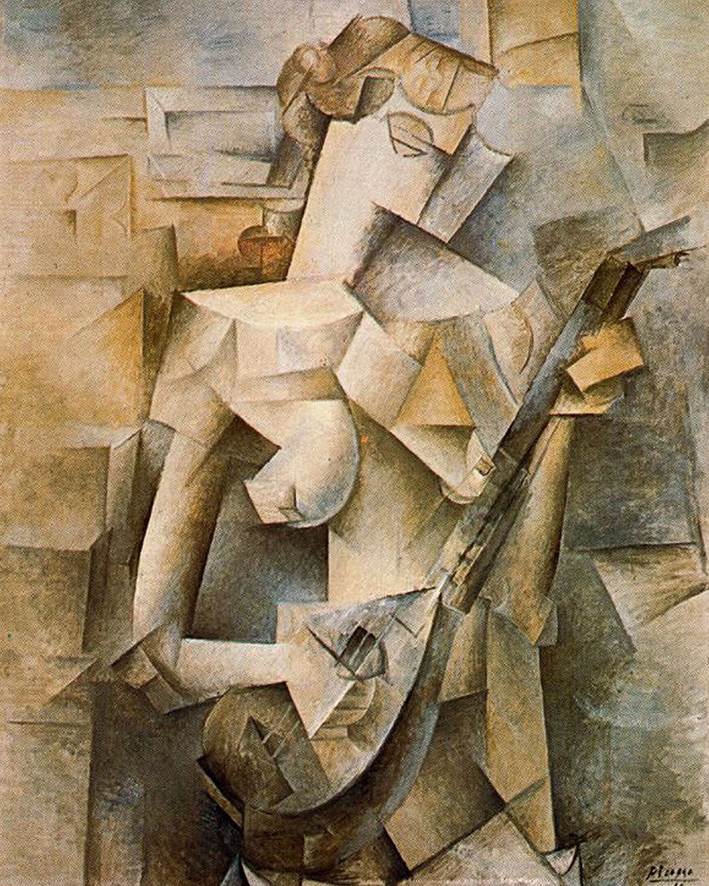
6. Woman with a Mandolin – Georges Braque
- Date created: 1910
- Dimensions: 80.5 x 54 centimeters (31.69 x 21.25 inches)
- Location: Museo Nacional Thyssen-Bornemisza, Madrid, Spain
Woman with a Mandolin is Georges Braque’s version of the same subject as Picasso’s masterpiece. It was painted around the same time and stresses the fact that Braque attempted to further break down the elements in the painting to produce a precursor of abstract art.
The artist had just spent about 2 years painting still life and landscapes and this was one of the first that included a human figure after this period. The loose brushstrokes and the integration of the Divisionist technique make this a significant early Cubist painting.
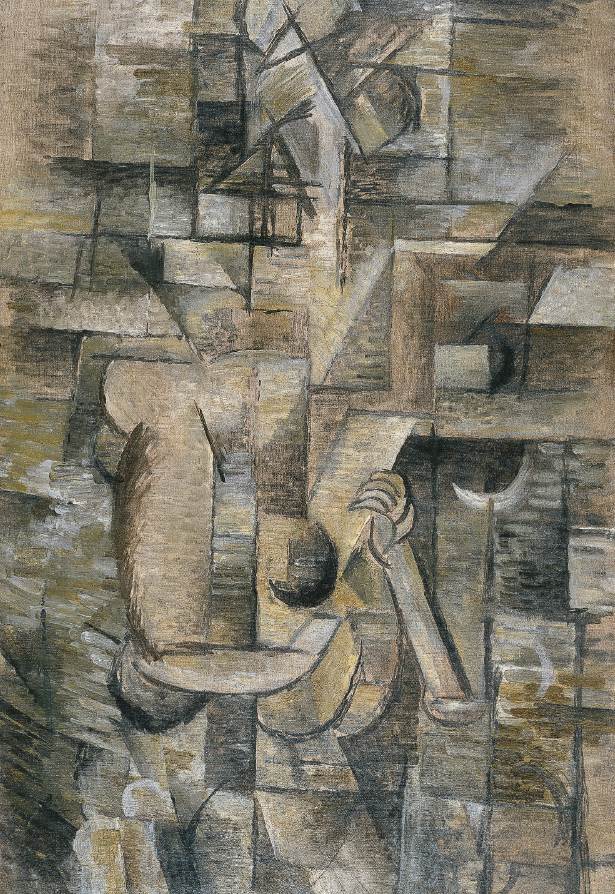
7. Nude Descending a Staircase, No. 2 – Marcel Duchamp
- Date created: 1912
- Dimensions: 147 × 89.2 centimeters (57.12 × 35.87 inches)
- Location: Philadelphia Museum of Art, Philadelphia, United States
Nude Descending a Staircase, No. 2 is arguably the most famous painting in the oeuvre of Marcel Duchamp (1886-1968), a French painter and sculptor who later became a renowned Dada Artist. The painting was displayed at the 1912 Salon des Indépendants in Paris.
What’s remarkable about this amazing Cubist painting is that it’s borderline futuristic, a notion that wasn’t appreciated by the other Cubists at the time who rejected the work. Because it combines elements of both Cubist and Futurist ideas, it was hard to define at the time which led to this decision.
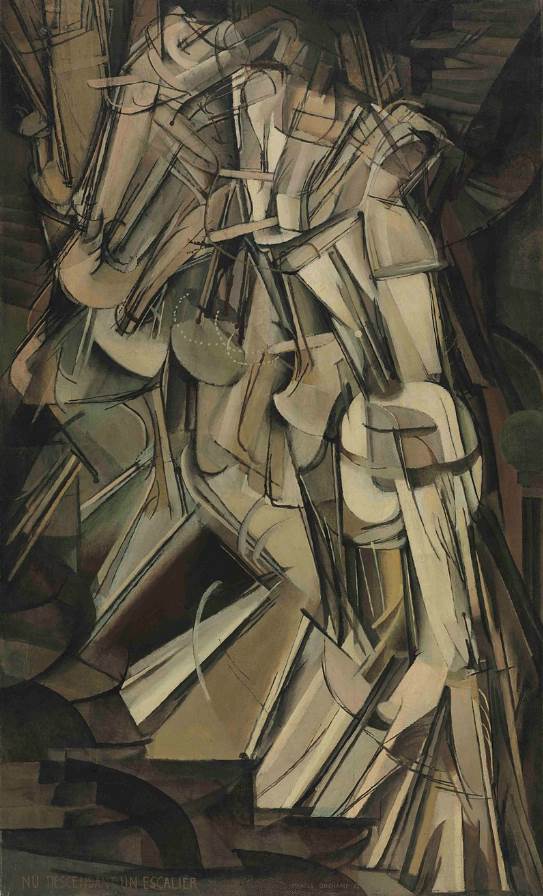
8. Girl before a Mirror – Pablo Picasso
- Date created: 1932
- Dimensions: 162.3 × 130.2 centimeters (63.9 × 51.3 inches)
- Location: MoMA, New York City, United States
Girl Before a Mirror is one of the most distinctive Picasso paintings and is overloaded with colorful effects. It depicts his mistress and muse, a woman named Marie-Thérèse Walter (1909-1977) as she stands in front of a mirror.
The painting was completed in the year 1932, a time when Picasso was already one of the most famous living artists in the world. He was already 50 by then and had his mistress was barely 22 years old. Equally remarkable is that the couple was already together for 5 years at the time.
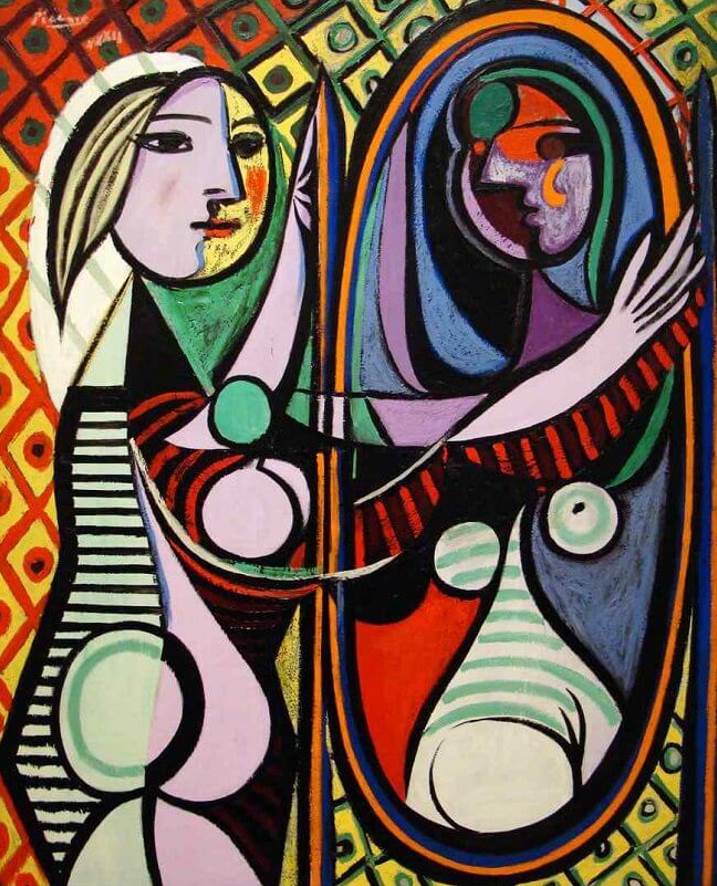
9. I and the Village – Marc Chagall
- Date created: 1911
- Dimensions: 192.1 × 151.4 centimeters (75.6 × 59.6 inches)
- Location: MoMA, New York City, United States
I and the Village is an intriguing work of art that was produced by the Belarusian-French artist Marc Chagall (1887-1985). He was born in a small town n modern-day Belarus which was formerly part f the Grand Duchy of Lithuania but that was part of the Russian Empire at the time.
The painting incorporates Cubist elements but can also be described as a precursor to the Surrealist art movement. It features dreamy images of his native town. These were common elements of the Surrealist artists and it was painted using a Cubist framework.
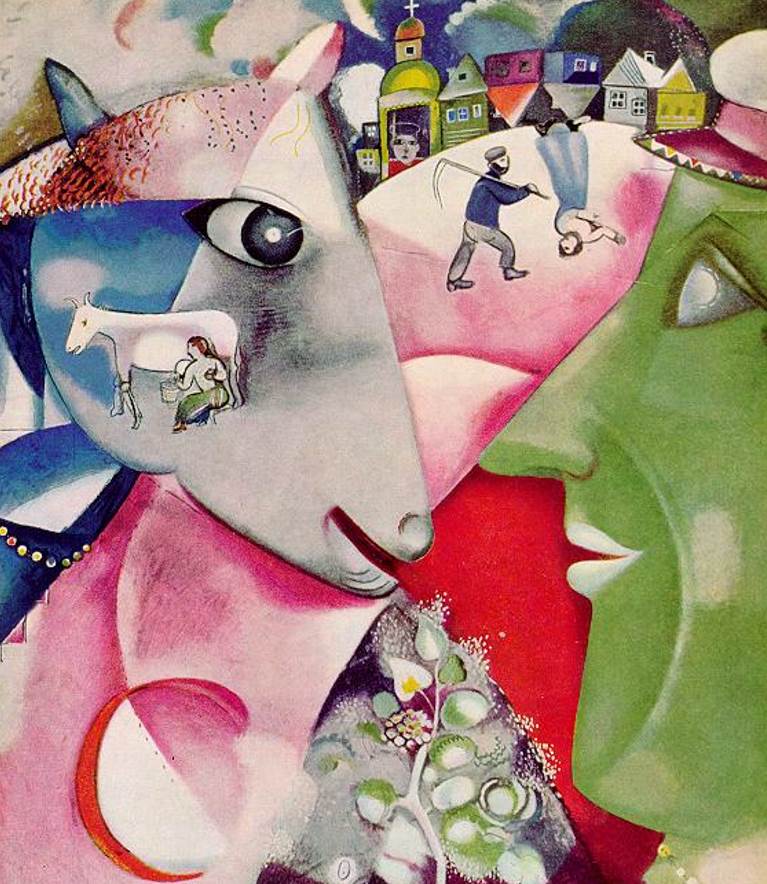
10. Portrait of Pablo Picasso – Juan Gris
- Date created: 1912
- Dimensions: 93.3 × 74.4 centimeters (36.25 × 29.31 inches)
- Location: Art Institute of Chicago, Chicago, United States
The Portrait of Pablo Picasso has been described as an ode by Juan Gris (1887-1927) to one of the founders of the Cubist art movement. It’s also considered to be one of the finest portraits that incorporate the Cubist ideas.
Juan Gris had moved to Paris in the year 1906 and settled in the Montmartre neighborhood of the city. Here he met Picasso who introduced him to several other famous artists. Gris became a renowned artist himself, producing several high-quality Cubist paintings.
